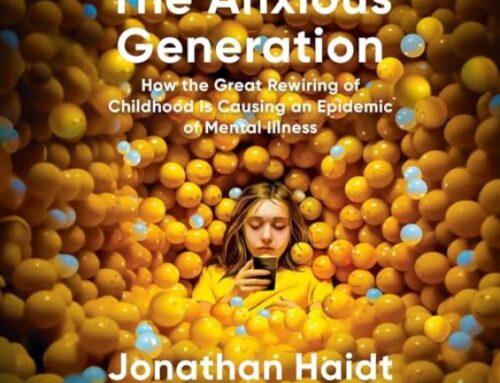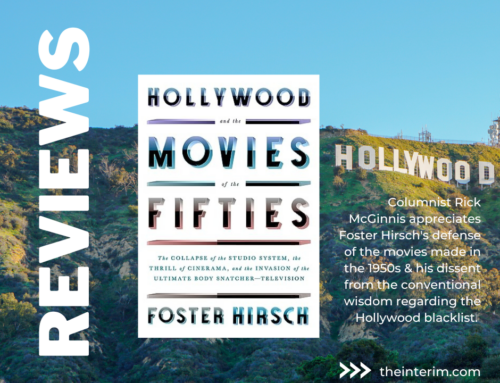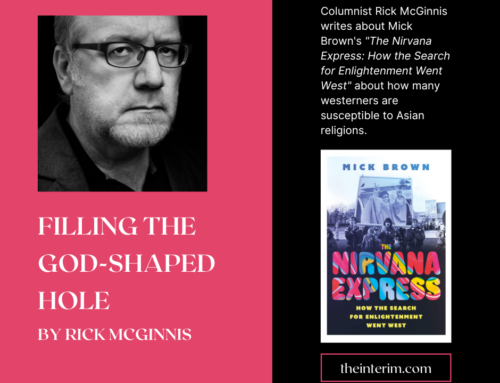 It’s been a long time since we’ve lived through a juicy controversy about art. The last really huge, international scandals that broke across the headlines and inspired debates on TV and in government were at least a generation or more ago, and it’s doubtful that a millennial will recognize names like Karen Finley, Robert Mapplethorpe, Andres Serrano or Chris Ofili.
It’s been a long time since we’ve lived through a juicy controversy about art. The last really huge, international scandals that broke across the headlines and inspired debates on TV and in government were at least a generation or more ago, and it’s doubtful that a millennial will recognize names like Karen Finley, Robert Mapplethorpe, Andres Serrano or Chris Ofili.
Subsequent furors have diminished in volume, and have been mostly centred in and around the British art world and the high profile Turner Prize, featuring media-driven “movements” like the Young British Artists – names like Ofili, Damien Hirst (the shark in a tank of formaldehyde,) Tracy Emin (the unmade bed) and Jake and Dinos Chapman (various carefully crafted “obscenities”).
Today, controversies about art are mostly local, and provoke outrage less because of aesthetics or morality than public funding. Canadians with a long memory will dimly recall a dress made of meat on display at the National Gallery in Ottawa. Calgarians might still be talking about the Bowfort Towers, four untidy pylons of rusty metal and stone installed last year on the side of the Trans-Canada Highway.
I was reminded of this while reading The New Philistines, a little hardcover polemic published last year by Sohrab Ahmari, an editorial writer for the Wall Street Journal. In the last of three parts of the book, Ahmari goes on a tour of several London art galleries to take the measure of what’s on display.
He begins in a gallery where three framed posters exhorting viewers to get out and vote against Brexit are hung. He moves on to another where a video screen shows a CGI humanoid engaged in various explicit sex acts. At the Institute for Contemporary Arts, there’s a film festival featuring public workshops where artists explain their work thusly: “The addicted subject is provisional, porous, inessential, performative. It is a community without asserting its identity. The addicted user circumvents the social reality of consumptive capitalism because the supplement (in whatever form or activity – sexual, consumer, chemical, etc.) can produce a biologically absolute enjoyment.”
And so on. His day concludes at a gallery where he watches a short video of a young woman twerking (shaking her behind about), intercut with a barrage of political slogans. Helpfully, the artist explains that it’s about “addressing white supremacy and talking about twerk, the political virtues of twerk.”
With all of this cultural richness on the menu, Ahmari concludes, it’s no wonder that “the general public long ago stopped looking for beauty in high culture.” But this refuge might not last for long: What began in isolated pockets of academia has spread deeply into painting, sculpture, dance and theatre, and has made steady inroads into opera and film.
Recent public debates about “cultural appropriation” are the latest signs that your favorite superhero franchise or cable miniseries might feel pressure to assert the identity of the porous and inessential addicted subject, and address its various and sundry political virtues.
The near-complete banishment of middlebrow culture from bookshelves, stages and screens, large and small, has created a vast chasm between low and high culture, but that gulf is being earnestly bridged. Rest assured that anyone who seriously contemplates the revolutionary potential of twerking to overthrow racial and heteronormative oppression won’t rest until the struggle has been carried to talk shows, cooking programs, children’s cartoons, zombie dramas, and the Marvel Universe.
The fulcrum of Ahmari’s book is a brief transcription of a panel discussion between two video artists that includes this gem of insight: “Without wanting to be trite, it does, like, weirdly, like, synchronize with thoughts about, like, how much do you to be seen, in terms of, like, thoughts about identity, uh, thinking about the stakes of visibility and invisibility, legibility and obtuseness. It’s been a funnily, um, synchronized thing for me.”
It goes without saying that the rhetoric used to describe the art Ahmari has seen will have to be at least as ugly and awkward as the subject at hand. Beauty is a word that Ahmari uses pointedly to describe something that art was once tasked with evoking, like truth or goodness, but you’re not likely to hear the word much in contemporary art except pejoratively, as in oppressive “beauty standards” that are to be devoutly scorned.
Truth is even less referenced, except as something wholly objective, which is to say nothing like truth at all. Virtue, worst of all, might as well be something from a dead language.
Ahmari’s book is a nice summary of where we stand, but it’s an old story, chronicled often. The last really great polemic on the state of modern art was probably Why Beauty Matters, an hour-long BBC program hosted by philosopher Roger Scruton almost a decade ago. He begins with a warning: “I think we are losing beauty, and there is a danger that with it, we will lose the meaning of life.”
At any point between 1750 and 1930, Scruton asserts, an educated person would have told you that beauty was the point of art, a value as important as truth or goodness. That changed when originality – at all costs – superseded those values, depriving us of the relief from chaos and suffering that beauty in art provided.
Art became, in essence, whatever we said it was, and the ability to shock one of the few remaining yardsticks by which we measured its success. Artists stopped trying to communicate something universal and turned inward, creating work that looks to outsiders – the viewing public, really – like an “elaborately unfunny joke.”
“Discussions of the kind I have been having are dangerous,” says Scruton. “In our democratic culture people think it is threatening to judge another person’s taste.”
He made this statement almost a decade ago. As I write this, serious people, media personalities and politicians – not the same people, it goes without saying – talk about a “right” not to be offended, and art that aspires to the old standards of beauty, truth and goodness is considered retrograde, even kitsch.
“Today,” Scruton said back in 2009, “many artists look at the idea of beauty with disdain, a leftover from a vanished way of living which has no connection with the world that surrounds us.”
Blockbuster shows of old masters might still pack museums and the crowds around the Mona Lisa in the Louvre are still thick, but that hasn’t diverted contemporary art and the ideology that inspires it from its course. Ultimately, the marketplace might halt postmodern theorizing from hollowing out the last vestiges of joy and beauty and conventional morality – good defeats evil, virtue is rewarded – from popular culture.
That remains to be seen, but what is certain is that warning, polemics and jeremiads like Scruton’s and Ahmari’s have done nothing to put an obstacle in the way of wretched ugliness draining the colour and joy and beauty from art.




